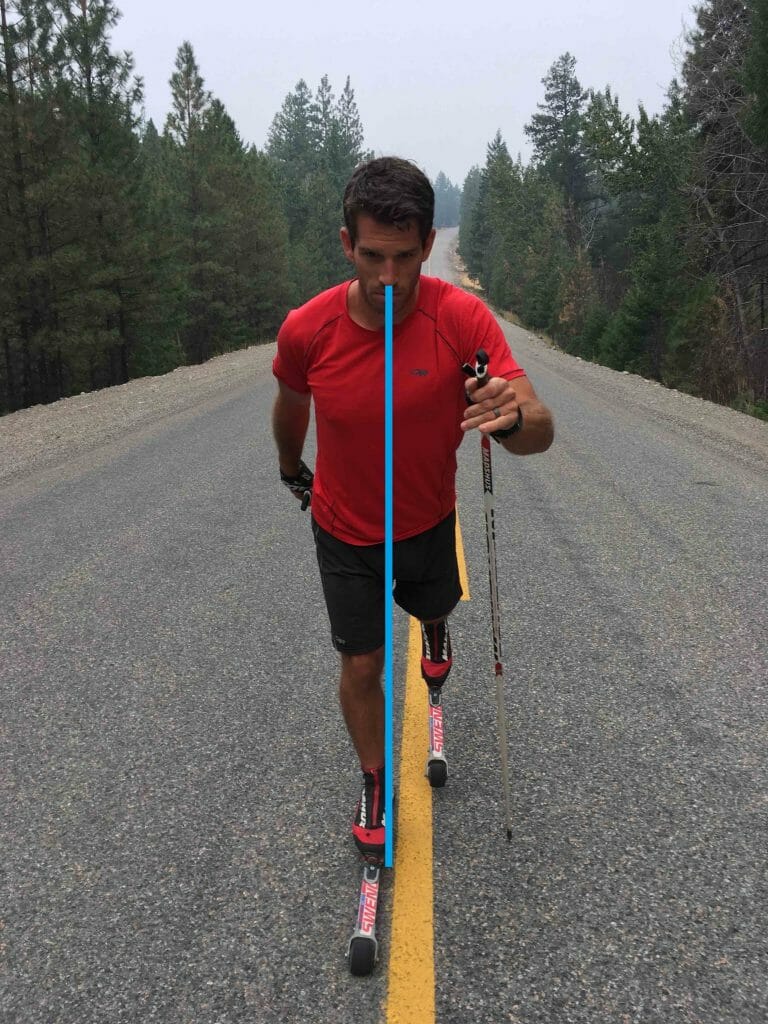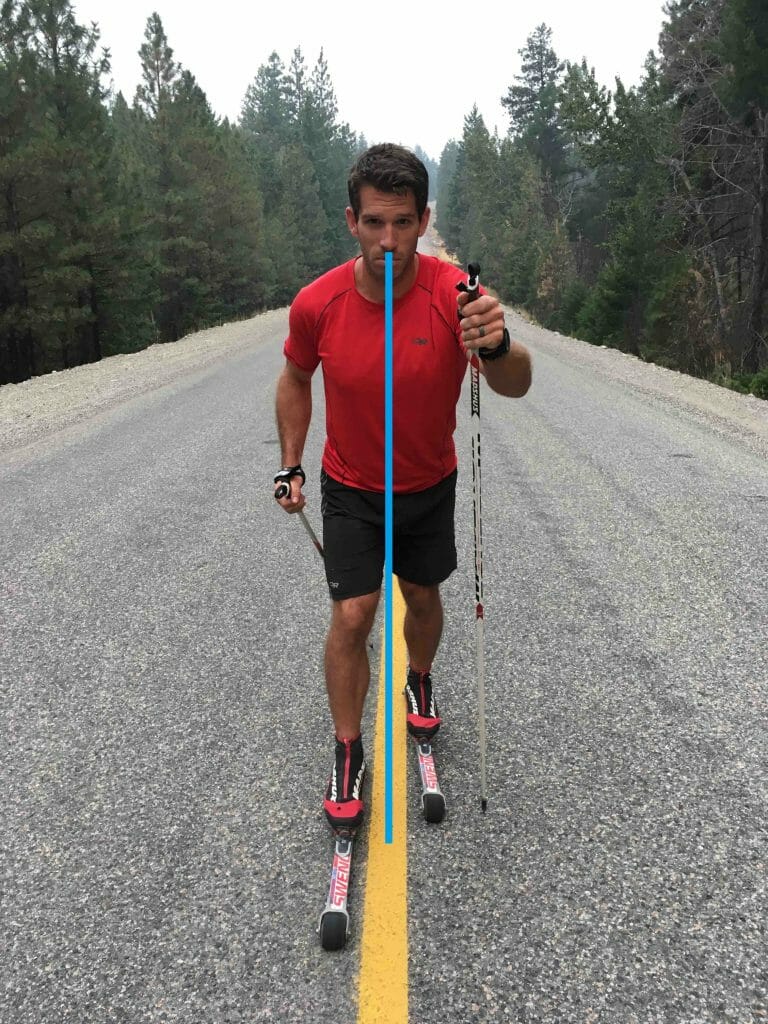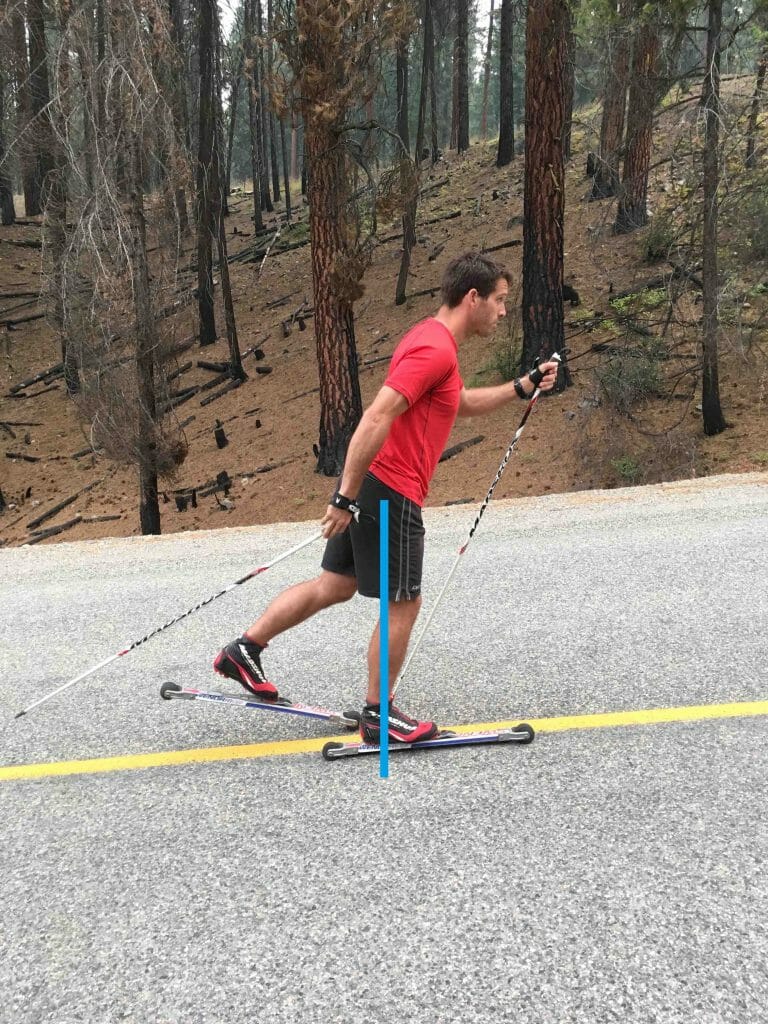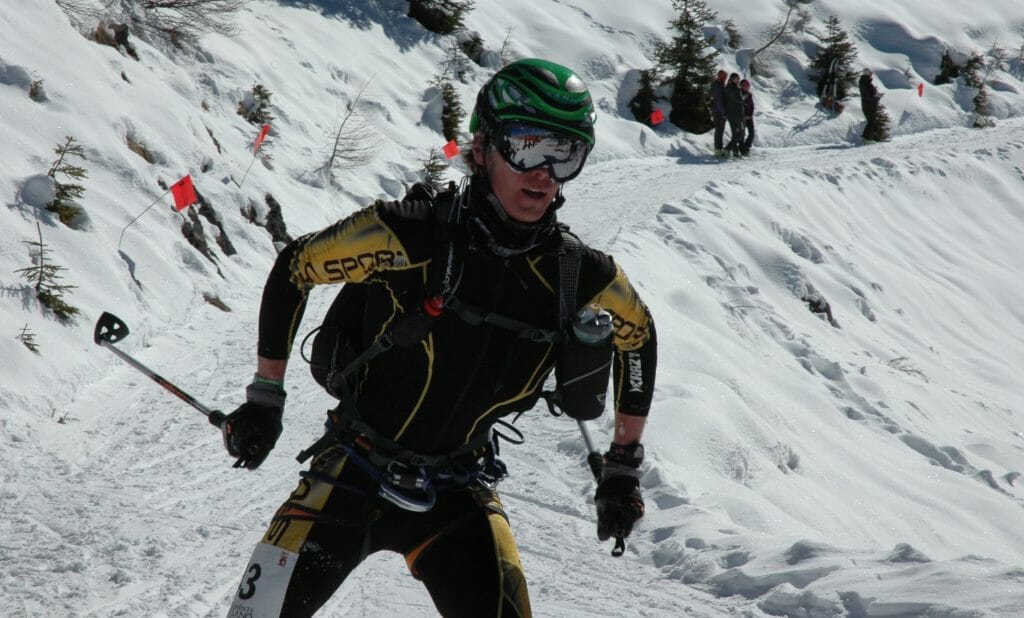Over the last decade the sport of ski mountaineering racing, or skimo, has seen a dramatic increase in participants, most notably in North America where it captures legions of trail and mountain runners seeking winter challenges in the mountains. Thanks to rapidly improving equipment, moving fast on skimo race gear has started to look more and more like the cross-country ski racing of yesteryear. It’s no surprise that skimo racers can reap huge efficiency gains by adapting a number of Nordic ski training methods. One of the most valuable of those methods is training on roller skis. By closely mimicking the movements of skinning, roller skis can help you improve your skinning technique. This is especially relevant in today’s fast-paced races that take place after hours on hard-packed ski area pistes. Plus you can use roller skis in the off-season and on dry land.
Roller skis are designed to simulate both skate and striding cross-country ski techniques on smooth pavement. With many different options and methods for getting strong training responses from roller skiing, we’ve distilled it down to a few basic guidelines. Follow these to get yourself on solid footing for your skimo training well before it begins to snow. Roller ski training also works great for racers living far from the slopes.
Equipment Choices for Roller Skiing
Roller Skis come in two basic models: skate and classic. For ski mountaineering you need a classic model, which features a ratcheted wheel that will roll easily forward but catches when you “kick,” simulating the grab of a skin underfoot.
Poles should be roughly the height of your armpit to allow for good power application. Use a light aluminum or composite Nordic ski pole, and purchase special roller skiing tips (known as “ferrules”), which won’t break or shatter on pavement.
Boots/bindings: While you can certainly mount a tech binding on roller skis and use your skimo race boots, we recommend starting with a standard Nordic classic ski boot, which offers much more ankle mobility and foot flexion. The advantage of this is that training in a light boot will increase your single-leg stability and strength for climbing and descending. It will also be more comfortable.
Roller Ski Technique
Consider these two basic tips when beginning your roller ski training:
- Weight Shift: This is the first and most important part of developing an efficient kick-and-glide for fast courses, often held on hard-packed, groomed ski slopes. Learn to shift your weight from one ski to the other when striding. This will ensure that the majority of the power you apply to the ski for your kick-and-glide will work toward forward motion and not get spilled out in between the skis. See photos below.
- Hip Extension: Crucial to long glide and powerful leg drives is hip extension. Use the cue of weighting your forward heel each time and “pulling” yourself up onto the ski like you would step up onto a box. This ensures a long glide and that you cover the most ground with each stride. See photos below.
Roller Ski Training for Skimo: Workout Ideas
Begin your roller skiing regimen with shorter, low-intensity outings in a quiet parking lot or along a low-trafficked roadway. It takes a bit of practice to learn starting (and stopping … no brakes included), as well as the balance on each ski.
Once you have your roller ski legs, look for long, gradual uphill roads to stride out and build your specific strength. Again, do this at low intensity.
Finally, once the base is laid with four to eight weeks of the above progression, consider adding in some workouts at and around your Lactate Threshold, as described in Training for the New Alpinism and discussed here. These workouts will provide more specific fitness for racing season, when you’ll be racing at high intensities.
Adding roller skiing to your skimo dryland training regimen will increase your specific strength in advance of the racing season. Follow the technique tips illustrated below, and you’ll see a significant boost in efficiency when you get on snow.
CORRECT

Shift your weight fully from one ski to the other when striding to ensure a powerful leg drive and solid skin adhesion on steep terrain.
INCORRECT

Note the inadequate weight shift in this photo. The skier's center of gravity is between the skis, making it much more difficult to powerfully drive the front ski forward or attain strong grip with the skin he's going to be weighting.
CORRECT

A strong hip extension puts the center of gravity over the forward ski, making the movement more dynamic and weighting the ski over the height of the camber for the best grip-and-kick. This is especially important if you’re using shorter kicker skins or very narrow skins for faster and/or flatter courses.
INCORRECT

Don’t “leave the hips behind”! This results in a sluggish leg drive and meager kick with the forward ski’s skin.
This article was originally published by Sam Naney.

